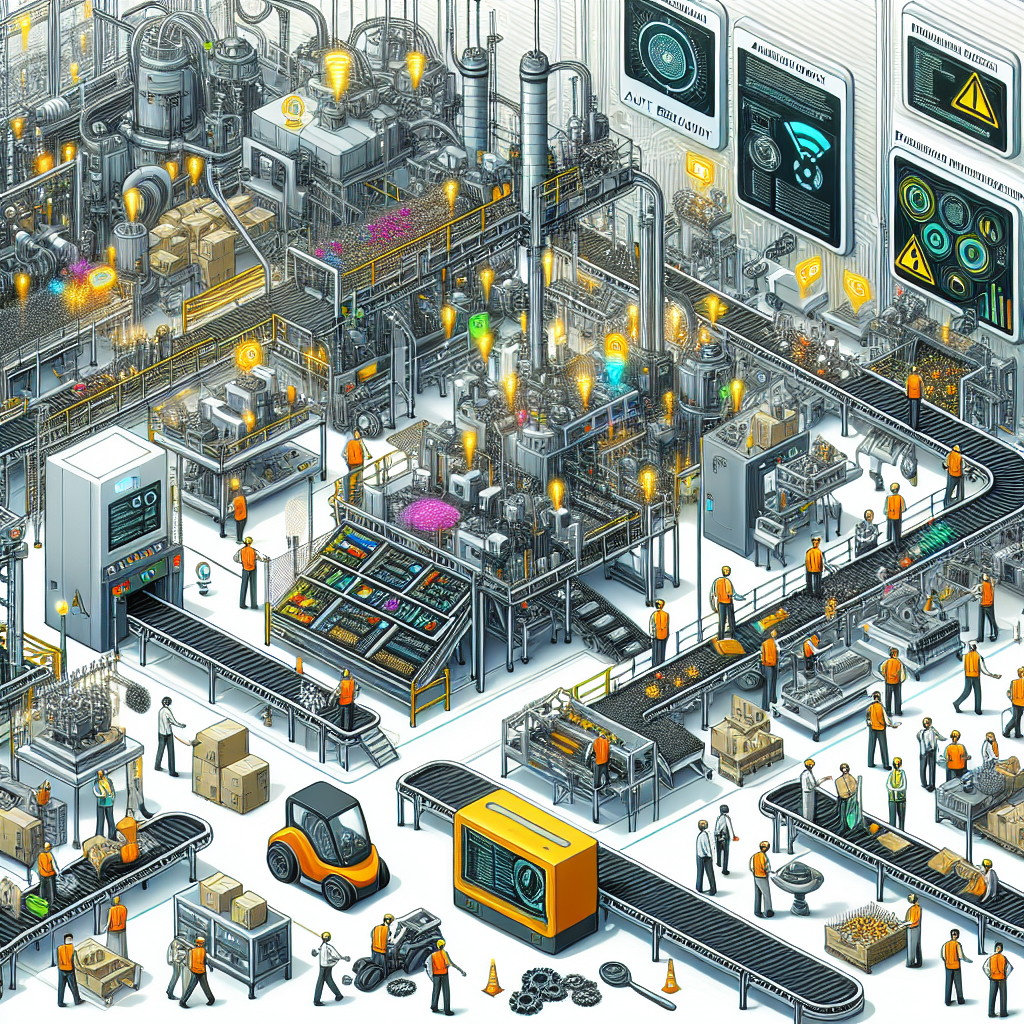Have you ever walked into a factory and marveled at the precision and efficiency happening around you? Well, I recently had that experience, only it wasn’t just regular old machinery at work—these were smart factories, and they are absolutely fascinating! Buckle up, because today we’re diving into how AI and other cutting-edge technologies are revolutionizing the manufacturing world.
What Exactly is a Smart Factory?
Imagine a regular factory but infused with a brain, eyes, and a nervous system. A smart factory is a cyber-physical system blending advanced technologies to analyze data, automate processes, and continually learn. It’s basically a part of the Industry 4.0 revolution, where digitalization meets intelligent automation. This means that machines, communication mechanisms, and computing power form a seamless ecosystem where data flows like water in a river. And trust me, it’s as cool as it sounds!
Automation, Robots, and AI on the Factory Floor
Now, let’s get into the nitty-gritty of how these factories operate.
1. Production Automation
– **Robotic Arms**: These beauties handle repetitive tasks like assembly, welding, and material handling. They don’t tire, clock out, or grumble about overtime, making them perfect for enhancing precision and speed.
– **Collaborative Robots**: Also known as cobots, these machines work alongside humans, assisting with tasks like packaging, quality control, and logistics. Think of them as helpful coworkers who don’t mind pulling extra shifts.
2. Quality Inspection
– **Visual Inspection**: AI-powered computer vision systems analyze images or videos to detect defects. For example, a custom Convolutional Neural Network (CNN) can achieve a staggering 99.86% accuracy in inspecting casting products. It’s like having Sherlock Holmes on your assembly line!
– **Sound Analytics**: AI also listens! Algorithms process audio data to identify machinery malfunctions based on sound patterns. It’s like your factory floor has a stethoscope and a PhD in mechanical engineering.
3. IoT + AI: Predictive Maintenance and Energy Efficiency
– **Predictive Maintenance**: IoT sensors monitor equipment health while AI predicts failures, letting you perform timely maintenance. Say goodbye to unplanned downtime and hello to reduced costs.
– **Energy Management**: AI analyzes extensive data to optimize energy usage. It’s like having a green energy consultant who never sleeps and always saves you money.
AI-Driven Energy Management in Smart Factories
Energy management isn’t just about flipping a few switches. It’s intricate, but AI makes it look easy.
1. Real-Time Energy Optimization
– **IoT Data Integration**: Sensors collect real-time data on energy consumption from all over the factory, including machinery, lighting, and HVAC systems.
– **Weather Forecast Integration**: AI combines this data with weather forecasts to predict energy demand variations. Imagine pre-cooling your factory during a predicted heatwave to cut energy costs. Genius, right?
2. Dynamic Energy Source Selection
– AI analyzes production schedules, demand patterns, and energy prices to pick the best energy sources. For high-demand hours, it might tap into the grid, but during low-demand periods, it could switch to stored or renewable energy.
And there’s more!
– **Predictive Maintenance**: Well-maintained machinery reduces energy waste.
– **Demand Response and Load Shifting**: AI shifts energy-intensive processes to off-peak hours to save on electricity costs. Picture running heavy machinery at night when electricity rates drop.
The Bottom Line: Savings and Sustainability
Smart factories are not just about cool tech—they’re about real benefits too. From reducing energy bills to lowering the carbon footprint, everything adds up. For instance, a smart factory in Ohio cut its energy costs by 15%, saving an impressive $500,000 annually. And larger companies like Praxair/Linde and Johnson & Johnson report millions in annual savings thanks to AI-driven efficiencies.
Beyond the Factory Floor: AI in Back Office Automation
Guess what? AI isn’t just sprucing up the factory floor; it’s also revolutionizing the back office. From financial analysis to HR automation, AI streamlines processes that used to be time-consuming. Imagine an AI that reviews contracts for potential issues, analyzes financial data to predict market trends, or even simplifies employee onboarding. It’s like having a full team of super-efficient employees ready to tackle any administrative challenge.
Wrapping it Up
Smart factories are truly the future of manufacturing. Through a combination of AI, IoT, and advanced robotics, these state-of-the-art facilities optimize efficiency, quality, and competitiveness. Whether it’s reducing downtime, improving product quality, or making factories more sustainable, the benefits are immense. And as AI continues to evolve, we can only imagine the incredible innovations that lie ahead.
Curious to explore more or share your thoughts on this technological revolution? Let’s keep the conversation going! What aspect of smart factories excites you the most? Drop your comments below, and let’s chat!
